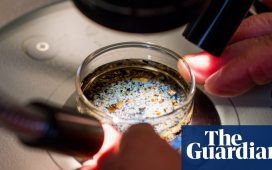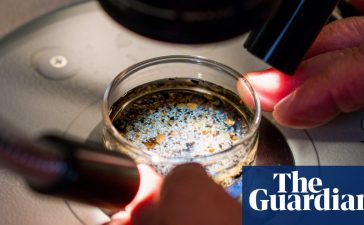Scientists have captured on video an extremely rare bird with male colours on one half of its body and female plumage on the other half, shedding more light on androgyny in the animal kingdom.
The rare green honeycreeper bird was spotted on a farm at a nature reserve near Manizales, Colombia, researchers say.
It had aqua-blue feathers on one half and yellow-green plumage on the other with a clear boundary in the middle.
Typically males of the species have bright blue feathers and a black head, while females are grassy green all over, scientists say.
The bird’s unusual colouration is thought to have been caused by bilateral gynandromorphism – a rare cell division error which creates an egg that allows for fertilisation by two different sperm.
“The bird exhibited typical male plumage on its right side and female plumage on the left,” scientists noted, adding that its internal organs were also likely divided down the middle into male and female.
However, scientists could not confirm this by sight alone.
“Whether the internal organs of our bird were also bilaterally gynandromorphic is impossible to tell,” researchers said.
Photos of a bilaterally gynandromorphic Green Honeycreeper near Manizales, Colombia, 20 May 2022
(John Murillo)
They studied the rare bird for a period of 21 months as it returned to feed on the fresh fruit and sugar water left out every day by the owners of the Colombian farm.
This is only the second report of a bird with bilateral gynandromorphism, with the previous one over a century ago, and the first time the phenomenon has been captured on camera.
Researchers could not study the rare bird every day.
“It appeared to stay in the vicinity for periods of about 4–6 weeks and then vanish for another 8 weeks or so,” they said.
Did birds predict the Japan Earthquake? Here is some startling footage of bizarre behaviour
The bird also seemed to wait for other birds to leave before approaching, the scientists from Whitehawk Birding and Conservation in Panama say.
“In general, it avoided others of its species, and the others also avoided it; it seems unlikely, therefore, that this individual would have had any opportunity to reproduce,” researchers wrote in the Journal of Field Ornithology.
Such cases of bilateral gynandromorphism are extremely rare in the animal kingdom, previously seen in animals like chickens, songbirds, spiders, and lobsters.
“Our observations extended over an unusually long period (21 months) and are the first of a gynandromorph of this species alive in the wild,” scientists wrote.
They said the bird in Colombia also differed from the only other documented case in a potentially important aspect. “Moreover, the bird we observed exhibited female plumage on the left and male on the right, the opposite of the previous case from over 100 years ago,” they said.












